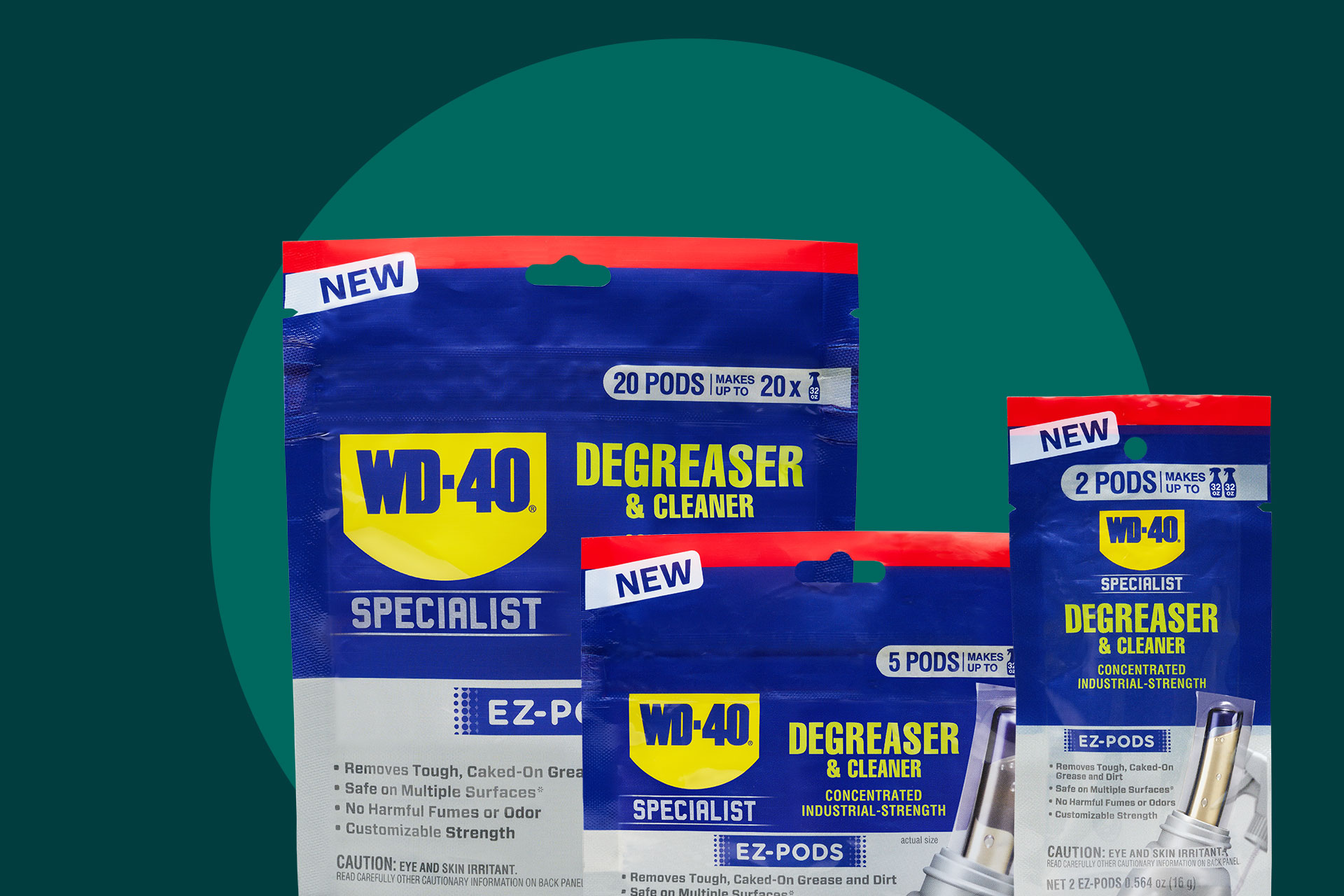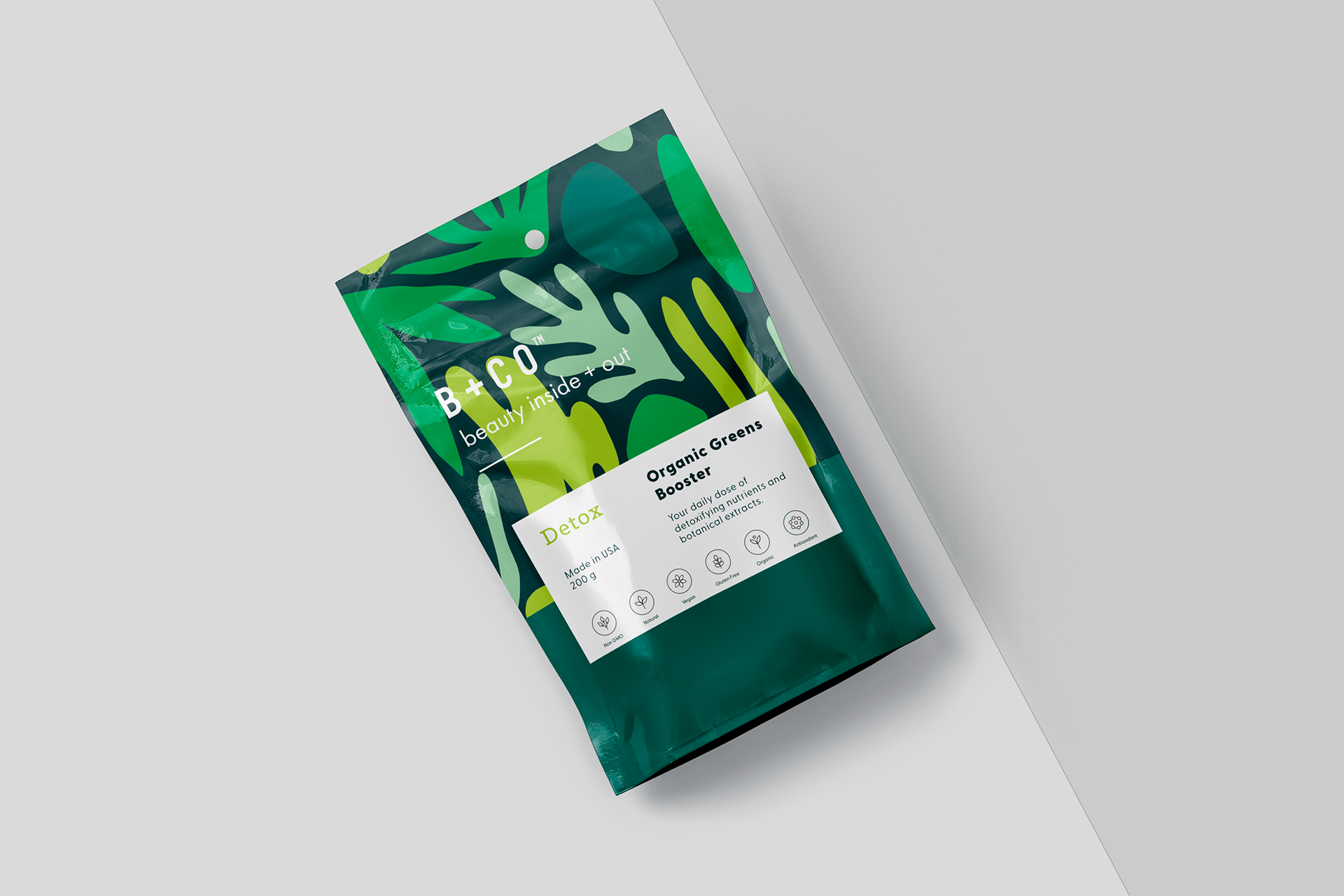5 key benefits of flexible packaging for dietary supplements and functional foods:
Maintain product freshness
Protein and other powdered supplements are among the largest segments in the nutraceutical space. Typically packaged in rigid containers, the rise of flexible packaging has caused powdered supplement manufacturers to consider switching. This switch is largely due to the format’s ability to protect and keep the product fresh.
Moisture, oxygen, sunlight, and other environmental elements can harm products like protein powders and greens powders. By utilizing multi-layer constructions, brands can customize their flexible packaging for nutraceuticals to meet their specific performance needs. In the case of powders, many brands opt for a high-density PE film with a metalized lamination, to help prevent moisture from entering the bag. This keeps the powder dry and reduces spoilage.
But what can brands do to ensure product freshness after buyers open the package? A powder-resistant closure is one popular type of zipper used in nutraceuticals, which offers dual functionality. First, it extends shelf life by keeping out unwanted moisture. Second, it stops powder from becoming trapped in the zipper mechanism, which can hinder re-closure. By incorporating zippers and other resealable closures into their flexible packaging, brands provide consumers with an easy way to open, close, and prevent spills.
Reduces transportation costs and overall carbon footprint
With the rise of e-commerce and increasing shipping costs, packaged goods must be easily stored and efficiently transported.
Typically, more space is needed when shipping rigid containers and other irregularly shaped packages. Flexible packaging, on the other hand, has a higher product-to-package ratio. It is more lightweight and airtight, allowing more products to fit in a single truckload. To put this into perspective, one truckload of unfilled pouches is the equivalent of 26 truckloads of unfilled glass bottles. Flexible packaging reduces the number of trucks on the road, producing fewer emissions and requiring less fuel and energy to get products to consumers.
In addition to requiring less energy to transport, flexible packaging also uses fewer manufacturing resources. According to the FPA, due to its very light weight, flexible packaging typically uses less water, fossil fuel, and greenhouse gas emissions to produce compared to other packaging formats.
Enhances shelf appeal
Flexible packaging for nutraceutical products offers brands 100% print coverage for maximum shelf appeal. Combine matte film with metallic elements to make your graphics pop. Or, take advantage of the extra real estate to share your company story. Its ability to be easily transported and thrown into a gym bag also helps appeal to consumers’ active and on-the-go lifestyle.
Moreover, flexible packaging allows brands to incorporate a clear window, unlike other packaging formats. While a photo-quality image is still worth 1,000 words, giving the customer a direct view of what your greens powder looks like helps you stand out from the competition. It also instills more confidence in a buyer that what you see is what you get.
Create convenient packaging
60% of consumers are willing to pay more for packaging that is easy to open and store, with resealable closures that extend shelf life. In short, consumers pay more for convenience. Flexible packaging for nutraceutical products delivers that in spades.
While there are countless types of open and closure features available, here are some of the most common:
- Tear notches – Improves customer experience by allowing consumers to quickly and cleanly tear open the package. Ideal for single-use servings such as collagen or electrolyte powders, as well as pouches filled with greens or protein powders.
- Press-to-close zippers – Simple to use, consumers can easily match up the zipper tracks and press to close. Cost-effective and can be added to a wide variety of pouch sizes to ensure freshness for products such as powders, granules, and gummies.
- Child-resistant zippers – Designed to prevent accidental ingestion of products by children, these zippers feature a locking mechanism that requires two hands to open. Easy for adults but difficult for children. Ideal for specific supplements and other nutraceutical products.
- Tamper-evident seals – Sealed above the zipper, this closure helps identify if a package has been tampered with or contaminated. It can help show customers that your vitamin or dietary supplement is safe to consume.
- Powder-resistant closures – Keeps out unwanted moisture and stops powder from becoming trapped in the zipper mechanism.
- Slider closures with or without end clips – Allow for easy opening and closing of large and small pouches, respectively.
Boost the sustainability of your package
Consumers are more critical than ever about how they spend their money. According to a recent consumer study, 60 to 70 percent of US consumers are willing to pay more for sustainable packaging when labeled as eco-friendly. And, more and more consumers expect packaging to be recyclable or include higher levels of recycled content. Alongside legislation banning single-use plastics, sustainability is becoming a minimum requirement for doing business.
While you can’t recycle flexible packaging curbside, brands can still design with recycling in mind and appeal to today’s eco-conscious consumers. One way of doing this is by utilizing mono-material constructions. For example, a sustainable PE construction can recycle through collection services like How2Recycle’s Store Drop-off program. Another way to incorporate sustainable materials into flexible packaging for nutraceutical products is by using post-consumer recycled (PCR) content, or compostable and bio-based films.
As more consumers come to expect sustainable packaging, these factors will become more critical for brands to adopt.
The trend toward sustainable packaging formats and the desire for convenience and extended shelf life will be around for a while. As technology and innovation continue to drive flexible packaging forward, brands across all markets should take notice of ways they can incorporate this format into their product line.
Whether you’re looking to transition from rigid containers to flexible packaging or augment an existing product line with a new format, our experts are here to guide you through the process.


